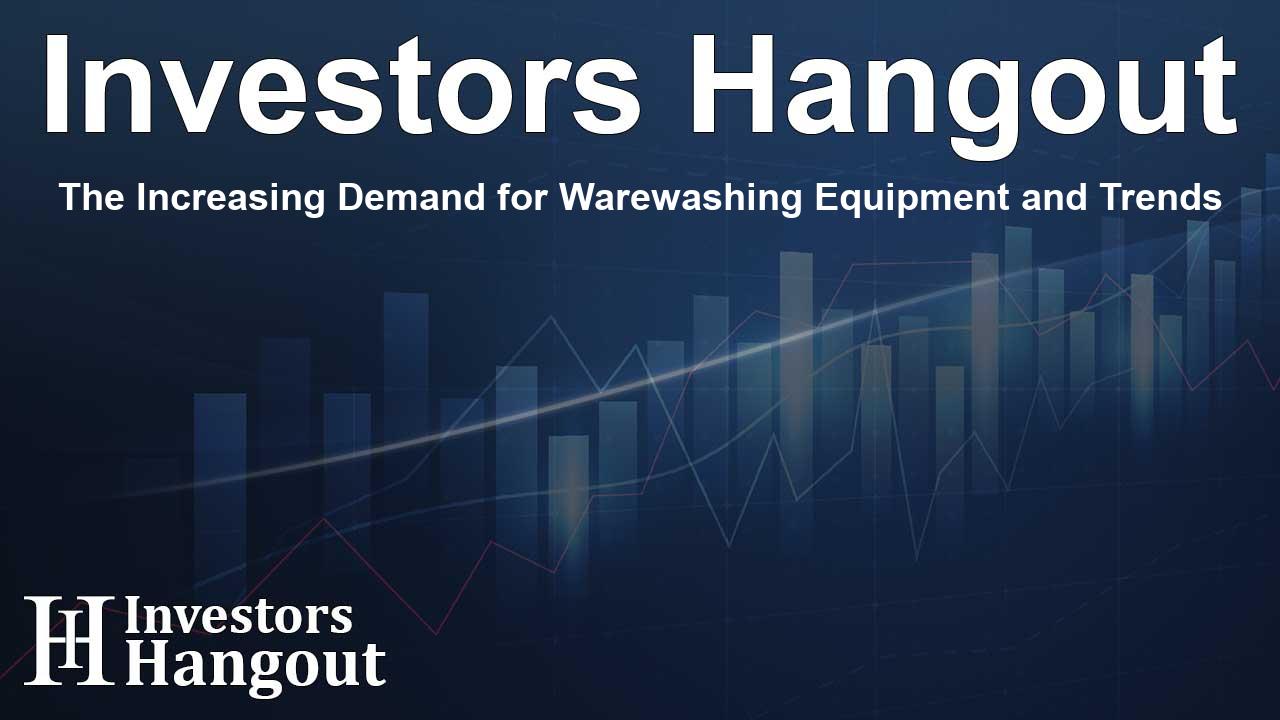The Increasing Demand for Warewashing Equipment and Trends

Understanding the Growth of the Warewashing Equipment Market
The global warewashing professional equipment market is showing remarkable growth, currently valued at US$ 5.6 billion and expected to reach an impressive US$ 8.3 billion in the coming years. This surge is primarily due to the heightened emphasis on hygiene and operational efficiency across various industries, including hospitality, foodservice, and healthcare. As businesses adapt to evolving consumer preferences, the demand for advanced cleaning solutions is projected to increase at a compound annual growth rate (CAGR) of 3.7% until 2034.
Drivers Behind the Market Expansion
Several technological advancements are driving this growth, specifically in automation, energy efficiency, and eco-friendly practices. The warewashing equipment sector, which involves dishwashers, glass washers, and high-volume cleaning machines, is evolving to meet the increasing demands of the global market for efficient solutions.
The Foodservice Sector
One of the core markets for warewashing equipment is the foodservice industry. The ongoing expansion of restaurants, hotels, and catering businesses has escalated the need for effective cleaning solutions. As establishments scale up to accommodate more customers, they require reliable and high-performance equipment to maintain hygiene and cleanliness.
Importance of Automation
With the rise of automation in kitchens, equipment that features programmable cycles and energy-saving modes has gained popularity. By embracing these automated systems, businesses can enhance operational efficiency, minimize labor costs, and maximize speed in cleaning processes.
Emerging Trends in Warewashing Equipment
As food safety and hygiene regulations become more stringent, there is a notable rise in the demand for advanced cleaning equipment that ensures thorough sanitation and minimizes cross-contamination risks. The emergence of eco-friendly and energy-efficient warewashing solutions is further propelling this market forward.
Innovative Technology and Sustainability
Innovations such as IoT integration within warewashing systems allow for remote monitoring and adjustments that enhance energy management. As restaurants and kitchens focus on sustainability, there is a growing trend towards water-saving equipment that aligns with environmentally conscious business practices.
Key Players in the Market
Several leading companies are pivotal in shaping the warewashing professional equipment market. Notably, organizations like Winterhalter Gastronom, Hobart Corporation, Miele Professional, Meiko, and Electrolux Professional lead the charge with high-quality and energy-efficient solutions tailored for the foodservice industry.
Strategic Innovations
These manufacturers are dedicated to driving innovation. They are frequently updating their product lines to incorporate cutting-edge technology focused on achieving maximum energy efficiency and outstanding cleanliness. This commitment to improvement is influencing how foodservice businesses approach hygiene and sanitation.
Market Segmentation and Future Outlook
The warewashing market can be segmented by product type, end-use industry, and region, each revealing unique opportunities for growth. The demand for undercounter dishwashers, conveyor dishwashers, and glass washers is anticipated to surge as the food and hospitality sectors experience expansion.
End-User Insights
The largest user segment remains restaurants, driven by rising dining establishments. Hotels and healthcare institutions also require robust warewashing solutions to maintain cleanliness and health standards. Catering services are increasingly investing in commercial-grade warewashing systems as well.
Frequently Asked Questions
What is the current value of the warewashing equipment market?
The market is currently valued at US$ 5.6 billion and is projected to reach US$ 8.3 billion.
What factors drive the growth of this market?
The growth is driven by increased consumer demand in the foodservice industry, automation trends, and a heightened focus on hygiene and food safety.
Which companies are leading the warewashing equipment market?
Key players include Winterhalter Gastronom, Hobart Corporation, Miele Professional, Meiko, and Electrolux Professional.
How important is sustainability in the warewashing equipment sector?
Sustainability is highly important, as businesses increasingly seek eco-friendly and energy-efficient products to reduce operational costs while minimizing environmental impact.
What technology advancements are influencing the market?
Technological advancements such as IoT integration and smart warewashing systems are gaining traction, allowing for better monitoring and energy management.
About Investors Hangout
Investors Hangout is a leading online stock forum for financial discussion and learning, offering a wide range of free tools and resources. It draws in traders of all levels, who exchange market knowledge, investigate trading tactics, and keep an eye on industry developments in real time. Featuring financial articles, stock message boards, quotes, charts, company profiles, and live news updates. Through cooperative learning and a wealth of informational resources, it helps users from novices creating their first portfolios to experts honing their techniques. Join Investors Hangout today: https://investorshangout.com/
Disclaimer: The content of this article is solely for general informational purposes only; it does not represent legal, financial, or investment advice. Investors Hangout does not offer financial advice; the author is not a licensed financial advisor. Consult a qualified advisor before making any financial or investment decisions based on this article. The author's interpretation of publicly available data shapes the opinions presented here; as a result, they should not be taken as advice to purchase, sell, or hold any securities mentioned or any other investments. The author does not guarantee the accuracy, completeness, or timeliness of any material, providing it "as is." Information and market conditions may change; past performance is not indicative of future outcomes. If any of the material offered here is inaccurate, please contact us for corrections.